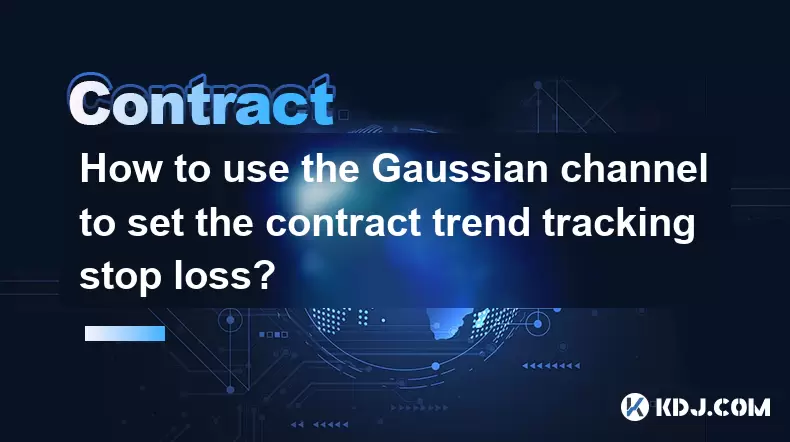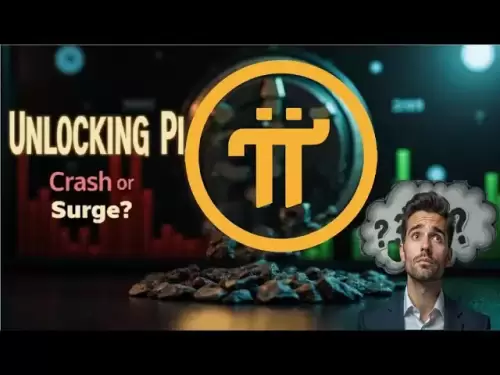-
 Bitcoin
Bitcoin $105,734.0170
-1.51% -
 Ethereum
Ethereum $2,414.7328
-3.26% -
 Tether USDt
Tether USDt $1.0002
0.00% -
 XRP
XRP $2.1748
-2.62% -
 BNB
BNB $647.5663
-1.72% -
 Solana
Solana $148.1710
-3.81% -
 USDC
USDC $0.9999
-0.01% -
 TRON
TRON $0.2799
-0.02% -
 Dogecoin
Dogecoin $0.1586
-4.17% -
 Cardano
Cardano $0.5440
-5.03% -
 Hyperliquid
Hyperliquid $37.0680
-6.59% -
 Bitcoin Cash
Bitcoin Cash $501.2052
-4.01% -
 Sui
Sui $2.6846
-3.47% -
 Chainlink
Chainlink $12.8488
-3.38% -
 UNUS SED LEO
UNUS SED LEO $8.9480
-1.51% -
 Avalanche
Avalanche $17.2059
-3.87% -
 Stellar
Stellar $0.2270
-4.75% -
 Toncoin
Toncoin $2.7889
-3.93% -
 Shiba Inu
Shiba Inu $0.0...01126
-1.76% -
 Litecoin
Litecoin $83.6893
-3.36% -
 Hedera
Hedera $0.1445
-4.49% -
 Monero
Monero $312.4014
-2.58% -
 Dai
Dai $1.0000
0.00% -
 Ethena USDe
Ethena USDe $1.0001
-0.01% -
 Polkadot
Polkadot $3.2920
-3.32% -
 Bitget Token
Bitget Token $4.4629
-1.81% -
 Uniswap
Uniswap $6.5386
-8.42% -
 Aave
Aave $260.3780
-6.01% -
 Pepe
Pepe $0.0...09308
-4.54% -
 Pi
Pi $0.4864
-3.04%
Difference between KuCoin options and contracts
KuCoin's options grant traders flexibility and limited risk, while its contracts offer high leverage but carry potentially unlimited risk for both buyers and sellers.
Nov 19, 2024 at 11:34 pm

Difference between KuCoin Options and Contracts
KuCoin, the popular cryptocurrency exchange, offers a robust platform for trading various financial instruments, including options and contracts. While both options and contracts involve derivative trading, they differ significantly in their mechanisms, risks, and rewards. This comprehensive guide delves into the key differences between KuCoin options and contracts, providing traders with a clear understanding of each instrument's characteristics.
Understanding Options and Contracts
Before exploring the specific distinctions between KuCoin options and contracts, it is essential to grasp the fundamental concepts of each instrument.
Options: Options are contracts that grant the buyer the right, but not the obligation, to buy or sell an underlying asset at a predetermined price on or before a specified date. The buyer of an option pays a premium to the seller in exchange for this right.
Contracts: Contracts, also known as futures contracts, are agreements to buy or sell an underlying asset at a predetermined price on a specified date. Unlike options, which provide the buyer with a choice, contracts obligate both the buyer and seller to fulfill the transaction.
Key Differences between KuCoin Options and Contracts
KuCoin offers a diverse range of options and contracts, each with unique features and trading mechanisms. The following are the primary differences between these instruments:
1. Nature of the Obligation:
- Options: Options provide the buyer with the right, not the obligation, to buy or sell the underlying asset. The buyer can choose to exercise the option or let it expire worthless.
- Contracts: Contracts create a binding obligation for both the buyer and seller to execute the transaction at the agreed-upon price and date.
2. Premium vs. Margin:
- Options: Option traders pay a premium to the seller to acquire the right to buy or sell the underlying asset.
- Contracts: Contract traders post margin, which serves as collateral to cover potential losses. The margin requirement varies depending on the underlying asset and trading conditions.
3. Settlement:
- Options: Options can be settled in two ways: by exercising the option to buy or sell the underlying asset or by selling the option contract in the market.
- Contracts: Contracts are always settled by delivering the underlying asset (for long contracts) or receiving the payment (for short contracts).
4. Risk and Reward:
- Options: The buyer's risk is limited to the premium paid. If the option expires worthless, the buyer loses only the premium amount. The seller's risk is potentially unlimited as they may have to deliver the underlying asset if the buyer exercises the option.
- Contracts: Both the buyer and seller face potentially unlimited risk in futures contracts. If the market moves against their position, they may incur significant losses that exceed their initial capital.
5. Trading Strategies:
- Options: Options offer a wider range of trading strategies due to their flexibility. Traders can use options for hedging, income generation, speculation, and volatility plays.
- Contracts: Contracts are primarily used for hedging and speculative trading. They provide leveraged exposure to the underlying asset, allowing traders to amplify both profits and losses.
Conclusion
KuCoin options and contracts are versatile financial instruments that cater to different trading needs and risk appetites. Options provide the flexibility of choice, while contracts offer the potential for higher leverage but also carry greater risk. Traders should carefully consider their objectives, risk tolerance, and trading experience before choosing between these instruments.
Disclaimer:info@kdj.com
The information provided is not trading advice. kdj.com does not assume any responsibility for any investments made based on the information provided in this article. Cryptocurrencies are highly volatile and it is highly recommended that you invest with caution after thorough research!
If you believe that the content used on this website infringes your copyright, please contact us immediately (info@kdj.com) and we will delete it promptly.
- Dogecoin, Meme Coins, and Crypto Investments: What's the Hype?
- 2025-07-02 14:30:12
- XRP: Institutional Positioning and the Undervalued Asset Narrative
- 2025-07-02 14:50:11
- SHIB Timeline & Growth Rate: Decoding Shiba Inu's Potential Ascent
- 2025-07-02 14:30:12
- Bitcoin Price Rollercoaster, ICO Mania, and the Fear of Missing Out (FOMO)
- 2025-07-02 13:10:12
- Coinbase, Crypto, and Amazon: A New Era of Financial Integration
- 2025-07-02 12:30:12
- BlackRock, Crypto.com, and Tokenization: A New Era for TradFi and DeFi
- 2025-07-02 13:10:12
Related knowledge

How to use the price slope to filter the false breakthrough signal of the contract?
Jun 20,2025 at 06:56pm
Understanding the Concept of Price Slope in Contract TradingIn contract trading, especially within cryptocurrency derivatives markets, price slope refers to the rate at which the price changes over a specific time period. It helps traders assess the strength and sustainability of a trend. A steep slope may indicate strong momentum, while a shallow slope...

How to determine the expected volatility of the contract through the volatility cone?
Jun 19,2025 at 12:28pm
Understanding the Basics of Volatility in Cryptocurrency ContractsIn the realm of cryptocurrency trading, volatility is a key metric that traders use to assess potential risk and reward. When dealing with futures contracts, understanding how volatile an asset might become over time is crucial for position sizing, risk management, and strategy developmen...

How to formulate a contract intraday trading plan in combination with the pivot point system?
Jun 21,2025 at 03:42pm
Understanding the Basics of Pivot Points in Cryptocurrency TradingPivot points are technical analysis tools used by traders to identify potential support and resistance levels. These levels are calculated using the previous day's high, low, and closing prices. In the context of cryptocurrency trading, where markets operate 24/7, pivot points help trader...

How to adjust the contract position ratio through the price fluctuation entropy?
Jun 22,2025 at 11:42am
Understanding Price Fluctuation Entropy in Cryptocurrency ContractsIn the world of cryptocurrency futures trading, price fluctuation entropy is a relatively new concept used to measure market volatility and uncertainty. It derives from information theory, where entropy refers to the degree of randomness or unpredictability in a system. In crypto contrac...

How to use the volume swing indicator to predict the contract volume-price divergence?
Jun 18,2025 at 11:42pm
Understanding the Volume Swing IndicatorThe volume swing indicator is a technical analysis tool used primarily in cryptocurrency trading to evaluate changes in volume over time. Unlike price-based indicators, this metric focuses solely on trading volume, which can provide early signals about potential market reversals or continuations. The key idea behi...

How to use the Gaussian channel to set the contract trend tracking stop loss?
Jun 18,2025 at 09:21pm
Understanding the Gaussian Channel in Cryptocurrency TradingThe Gaussian channel is a technical indicator used primarily in financial markets, including cryptocurrency trading, to identify trends and potential reversal points. It is based on statistical principles derived from the normal distribution, commonly known as the Gaussian distribution or bell ...

How to use the price slope to filter the false breakthrough signal of the contract?
Jun 20,2025 at 06:56pm
Understanding the Concept of Price Slope in Contract TradingIn contract trading, especially within cryptocurrency derivatives markets, price slope refers to the rate at which the price changes over a specific time period. It helps traders assess the strength and sustainability of a trend. A steep slope may indicate strong momentum, while a shallow slope...

How to determine the expected volatility of the contract through the volatility cone?
Jun 19,2025 at 12:28pm
Understanding the Basics of Volatility in Cryptocurrency ContractsIn the realm of cryptocurrency trading, volatility is a key metric that traders use to assess potential risk and reward. When dealing with futures contracts, understanding how volatile an asset might become over time is crucial for position sizing, risk management, and strategy developmen...

How to formulate a contract intraday trading plan in combination with the pivot point system?
Jun 21,2025 at 03:42pm
Understanding the Basics of Pivot Points in Cryptocurrency TradingPivot points are technical analysis tools used by traders to identify potential support and resistance levels. These levels are calculated using the previous day's high, low, and closing prices. In the context of cryptocurrency trading, where markets operate 24/7, pivot points help trader...

How to adjust the contract position ratio through the price fluctuation entropy?
Jun 22,2025 at 11:42am
Understanding Price Fluctuation Entropy in Cryptocurrency ContractsIn the world of cryptocurrency futures trading, price fluctuation entropy is a relatively new concept used to measure market volatility and uncertainty. It derives from information theory, where entropy refers to the degree of randomness or unpredictability in a system. In crypto contrac...

How to use the volume swing indicator to predict the contract volume-price divergence?
Jun 18,2025 at 11:42pm
Understanding the Volume Swing IndicatorThe volume swing indicator is a technical analysis tool used primarily in cryptocurrency trading to evaluate changes in volume over time. Unlike price-based indicators, this metric focuses solely on trading volume, which can provide early signals about potential market reversals or continuations. The key idea behi...

How to use the Gaussian channel to set the contract trend tracking stop loss?
Jun 18,2025 at 09:21pm
Understanding the Gaussian Channel in Cryptocurrency TradingThe Gaussian channel is a technical indicator used primarily in financial markets, including cryptocurrency trading, to identify trends and potential reversal points. It is based on statistical principles derived from the normal distribution, commonly known as the Gaussian distribution or bell ...
See all articles

























































































